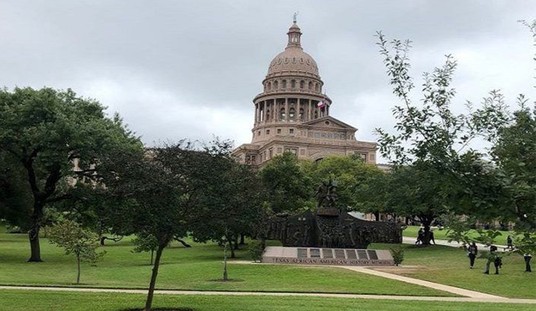California has been having plenty of trouble with electricity generation lately. One of the few bright spots in the once and former Golden State's energy picture is the Diablo Canyon nuclear power plant, which produces 2,200 megawatts of electricity — 17 percent of California's total electrical generation capacity. But that's not a matter of concern for some self-proclaimed climate groups that want Diablo Canyon shut down; those groups, including Friends of the Earth, Mothers for Peace, and the Environmental Working Group, have filed motions on Tuesday to prevent the nuke plant's re-licensing.
In the filing, petitioners said they are “highly concerned” about extending the life of Diablo Canyon, located on the coast in San Luis Obispo County — citing both high costs for consumers and “extreme safety and environmental hazards” in keeping the plant online. They also asked the Nuclear Regulatory Committee to hold a hearing to assess any safety risks associated with relicensing Diablo.
California is and has been a place notorious for rolling blackouts, to the point where the impeccably coiffed Governor Newsom has had to stand up and take notice. And having the population — and population density — that they do precludes any notions about windmills and solar panels taking over for the vastly higher energy density of nuclear power.
See Related: Hypocrisy or Ignorance? Democrats Shriek About 'Climate Change' While Opposing Carbon-Free Nuclear Power
Blocking Wind and Solar Power Projects: A Growing Trend Among US Counties
The environmental groups contesting the continued operation of the Diablo Canyon plant are basing their argument on the age of the plant, citing (among other things) earthquake damage, although the plant has been in operation for nearly 40 years without incident.
However, some environmental groups in the state have said the safety of the plant is a worry because of the risk of embrittlement or damage due to shaking from nearby earthquake faults.
Supporters of the push to keep Diablo online argue that keeping it is crucial to helping the state achieve its goal of reaching 100% clean electricity by 2045 and to avoid blackouts during peak summer demand.
A study from the Brattle Group found that extending Diablo Canyon’s lifespan could help California decarbonize “more quickly, more reliably, and at a lower cost,” approximately $5 billion less, than if the plant shut down in 2025 as previously planned.
The fact is, if California is at all serious about reaching its "carbon-free" goals — you can color me skeptical about the possibility of that — they should be looking into more, not fewer, nuclear power stations. In fact, there is a great new option: Last year the Nuclear Regulatory Commission certified the first "Small Modular Reactor" design, which holds great promise for delivering reliable, clean electricity, especially to rural areas, of which California still has a surfeit.
Granted, even if California were to go all-in on the new small modular reactors, each site would still have to be individually evaluated and will have to go through a lengthy approval process – and will, no doubt, be heavily lobbied against by climate groups and Not-In-My-Backyard (NIMBY) types all the way through. That adds to the urgency, rather than attenuating it; the time to start this process would be yesterday, if not the week before.
Small modular reactors of this type have the enormous potential to provide clean, high-density energy. They’re uniquely useful in small, isolated communities. Does California want clean energy? This is clean energy. No “still just thirty years away” fusion boondoggles are required. Not that fusion wouldn’t be even greater if we could make it work on an industrial scale, but how long have various organizations been trying to make that happen?
This is a technology we have now.
The Diablo Canyon plant, the last nuclear power plant in California, has been in operation since 1985.














